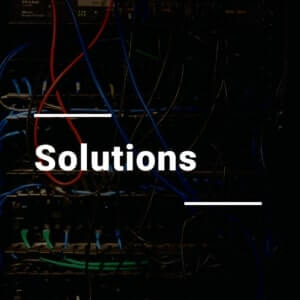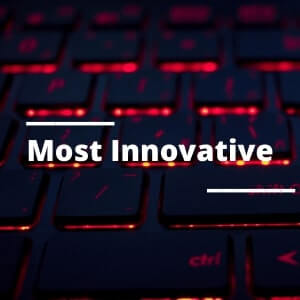 How IoT and Digital Twin technology work together to bring about Digital Transformation
How IoT and Digital Twin technology work together to bring about Digital Transformation
Here’s a very simple formula for Digital Transformation:
IoT * Digital Twin => Digital Transformation
What this says is that Digital Transformation is a result of the product of IoT and Digital Twin technology. It’s a product because the elements of IoT and the elements of Digital Twin are cross-factored in the solution.
Here’s how these buzzwords are being used in this context:
Digital Transformation uses digital technology to radically improve the way decisions are made in a system. It it often described as the convergence of information technology and operational technology (IT + OT).
Internet of Things is a methodology that provides instrumentation and control points into the physical world that make it easy to obtain specific information about the physical world, and easy to bring about actions and automate the regulation of the system.
A Digital Twin is a model of a physical system that is instrumented in more or less the same way the physical system described above, such that information obtained from the physical system can be used to update and calibrate the model.
Digital Twin Architecture
The system being modeled might be a hard physical system, like a building, or it might be an operational process, or a system of systems, like a commercial supply chain.
More about the model…
A digital twin model describes the things in the physical system and the relationships between them, whether they are directly instrumented or not. The model is the form of an information graph, that can be processed using various kinds of reasoning and filtering/lensing functions.
The Digital Twin model can then be used predictively, to solve for unknowns in the physical system. modeling parameters that aren’t directly instrumented, by solving regressions for unknown behavior using the known or discovered relationships between things in the model.
IoT provides data associated with sensors and control points that have actuation capability. However, in IoT itself, there is nothing to tell you what to expect from a given set of measurement data or from an actuation.
The Digital Twin model brings coherence and makes sense of the data from sensors, in the context of the overarching physical system, and provides a way to predict the effect of actuation on the state of the system before committing the actuation.
Digital Twin with Control
With well-understood data from sensors, a model that predict effects of actuation, a feedback loop can be created to drive toward continuous improvement of particular aspects of the system. In the case of an industrial process or physical control system, this feedback loop is a vast improvement on rudimentary control schemes like PID feedback control.
The system operational context is derived from the model, such that the model becomes the way external agents interact with the system. The model is kept up to date by IoT data from sensors, and effects in the model are quantified by evaluating sensor data trends against prior actuation operations, and other influences.
Digital Twin Models for Everything
Digital Twin models can be used to model complex equipment, including the IoT devices themselves, to provide advanced operational capabilities and control modes. For example, the behavior of equipment with internal control elements can be modeled in the context of the system, and its control settings and inputs can be pre-compensated to produce the intended effect in the system. Internal PID controllers might be de-tuned from their ideal standalone settings and set points may be juggled…
How does IoT apply to a system like a delivery chain? We need to think about IoT as including all “things”, whether they have radios and sensors or not. IoT is simply the digitization of things. A Digital Twin model will include many items that don’t have their own sensors, but are tracked by related information in the model. This is an example of the model solving for unknowns, when we can know the status of a thing by its related information in the graph.
When the system is an operational process itself, or something like a commercial supply chain, the Digital Twin model can be used to iterate over different system configurations and operational paths. Prediction scenarios might include many different system organizations, where the system itself can be more easily reorganized.
Re-thinking Systems
The net impact of all this includes a shift in the way we design systems, enabling us to take system adaptability into account during the design. We will be able to test the model against the system and continuously validate the model through feedback from the system. We can learn to design systems that are more adaptable to seasonal or chaotic changes in conditions.
Models can be built to provide advanced filtering, lensing, and query capability to enable us to learn more about the systems we are building. It’s like taking a little part of the research lab into out into the field in every product, every organization.
Take away points:
The convergence of IT and OT is not achieved by IoT alone; a tightly integrated, instrumented model of the system is needed for effective Digital Transformation.
Digital Twin models are graphs, that express the physical and operational relationships between things in the system and with its externalities.
Digital Twin models are generative and predictive; they provide derived representations for things in the system that aren’t directly measurable, and can be used to solve for unknown states of the system under hypothetical conditions.
Digital Twin models are synchronized to operational data, and become the high level interaction layer of the system. High level queries and lenses can be used to create dynamic views and “zoom in” to understand specific aspects of the system.
Digital Transformation brings R&D and Operations together with a coordinated and data-driven continuous improvement and adaptability strategy.















